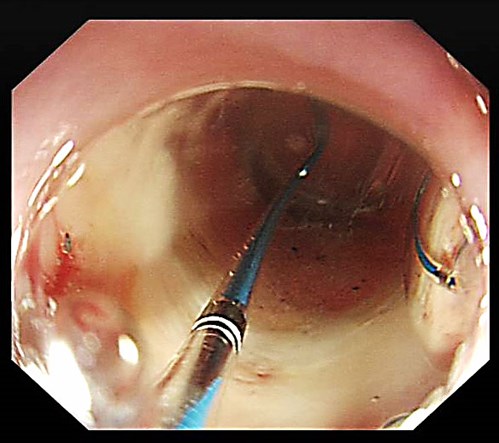Treatment
Eosinophilic oesophagitis (EoE) is a condition that will need
lifelong management. This can involve preventative measures, such
as changes in a person's diet, or medication, which is often used
to treat flares of the condition.
Occasionally, other treatments may be required. If EoE is not
treated, sometimes scarring can occur, resulting in narrowing of
the gullet. If this happens, further telescope procedures and
treatments can be needed (see below under the heading 'Endoscopic
treatment').
With careful and proactive management, most people who have EoE
can maintain a good quality of life.
Dietary management
If you have EoE, you may be allergic to certain foods. You may
be referred to a dietician to discuss how to identify which food
this may be. This can involve a very careful diet in which several
different types of food are all avoided for 4-6 weeks to see if
this improves a person's symptoms. Then, different food groups may
be re-introduced one at a time to see which food type causes the
problem. This process can be difficult to stick to, and should only
be done with input from a qualified dietitian. Some people need
supplements to ensure that they are getting all the nutrients they
need. It can take months to work through the whole diet and
identify the food type that causes symptoms. However, if this is
done properly, it can give a long-term way of controlling the
condition. Unfortunately, it is not always possible to identify a
food type that causes symptoms for every patient.
To help people manage their diet, some people find it very
useful to use specially designed apps on their smartphone or other
handheld device. This can be discussed with your dietitian or
doctor. It is important to note that we are not responsible for
third party content which may change over time.
Medications
You may be offered medications to try and treat EoE. One first
line medication is an acid-lowering tablet called a proton pump
inhibitor. This does not treat the underlying problem behind EoE.
However, it may ease the inflammation and improve some of the
symptoms. For some patients, this is enough to help manage their
symptoms. However, for many patients this medication on its own
does not improve their symptoms long term.
The main treatment recommended for EoE is steroid medication.
This is usually a dissolvable tablet that you place on your tongue.
As you swallow this with saliva, the steroid coats your gullet.
This medication is normally taken twice a day for 6 weeks to see if
your symptoms improve. Longer courses can be given if needed.
Currently this medication needs to be started by a specialist in
hospital.
Endoscopic treatment
Over time, irritation or inflammation in the gullet can lead to
narrowing of the tube. If a person with EoE develops a narrowing in
their gullet (called a stricture), this can make it difficult to
get food, or sometimes even fluids, to pass into the stomach. This
can be treated with an upper GI endoscopy and stretch with an
inflatable balloon (called a dilation). This procedure can be very
effective in improving a person's swallowing, but it also has risks
of causing problems. These include tearing a hole in the gullet.
Although the risk of this is low, it can be very serious if it
occurs. Endoscopy and balloon dilation can help treat a narrowing,
but will not treat the underlying EoE, so without effective
treatment the narrowing can come back. This is one of the reasons
why it is important to treat EoE, to try and limit the inflammation
and prevent the development of narrowing.

Figure 1. Endoscopic balloon dilation of an oesophageal
stricture. Source: UHBW NHS Foundation Trust.

Figure 2. Endoscopic balloon dilation of an oesophageal
stricture - annotated picture. Source: UHBW NHS Foundation
Trust.